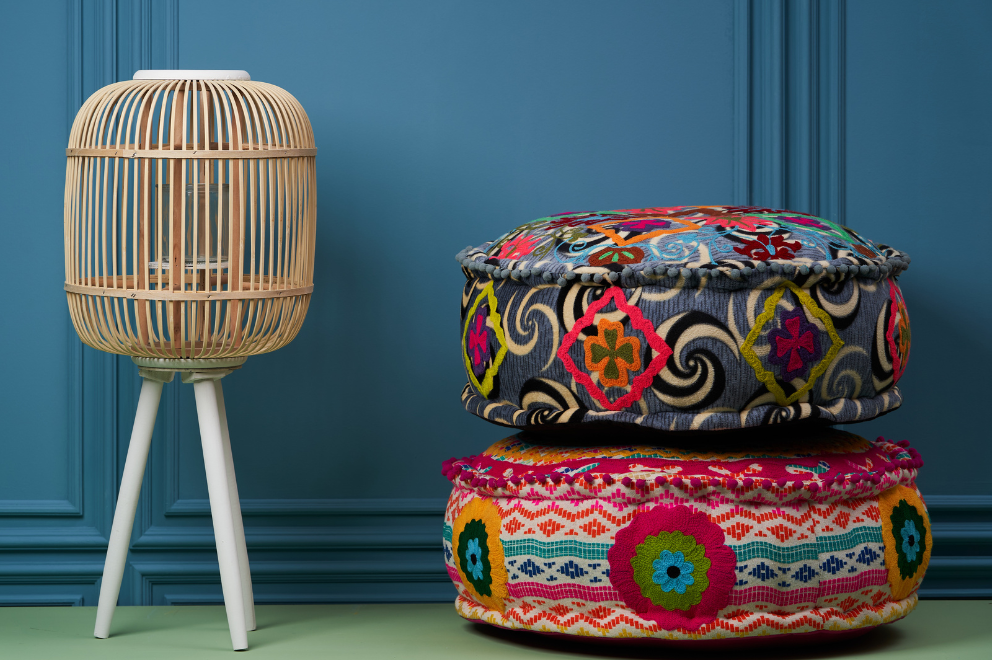
If you’re wondering how to make a home decor vision board, you’re already on the right track to organizing your ideas and bringing your dream space to life. A vision board isn’t just a collage; it’s a creative tool that helps you see your ideal home and make it real. Whether you’re a homeowner planning a renovation or a designer working with clients, creating a home decor vision board will help you focus your thoughts and spark fresh inspiration.
In this guide, we’ll cover the simple steps for gathering inspiration, arranging your ideas, and turning your dream space into reality.
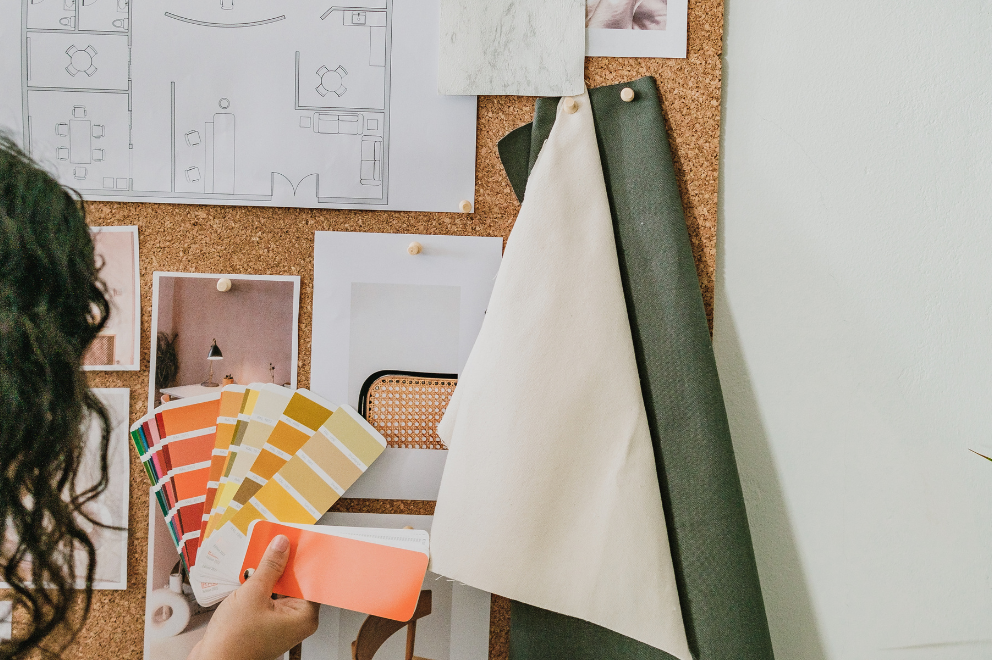
A home decor vision board is simply a way to pull together all your design ideas in one place. It’s like a visual plan that helps you organize your thoughts and figure out the style you want for your space. Whether it’s physical or digital, it’s more than just a collection of pretty pictures—it’s a tool that helps you see how your ideas fit together before you start buying furniture or picking colors.
When you create a vision board, you gather things like photos of furniture, color samples, and textures that reflect the look you want. Arranging them helps you see how different pieces work together to create a cohesive design. This process makes your ideas clearer and helps you avoid clashing styles or mismatched décor.
A vision board also keeps you focused during the decorating process. If you love multiple styles—like modern or vintage—a board lets you see which one you lean toward and prevents your design from feeling messy. As you add more elements, you’ll notice patterns in what you like, making it easier to stick to a consistent style.
It’s also a helpful guide for making decisions. When you’re choosing paint colors, furniture, or decorations, you can check your board to make sure everything fits your vision. It helps you avoid impulse buys that might not match. Plus, if you’re working with a designer, contractor, or even family, the board gives everyone a clear idea of the direction you’re heading.
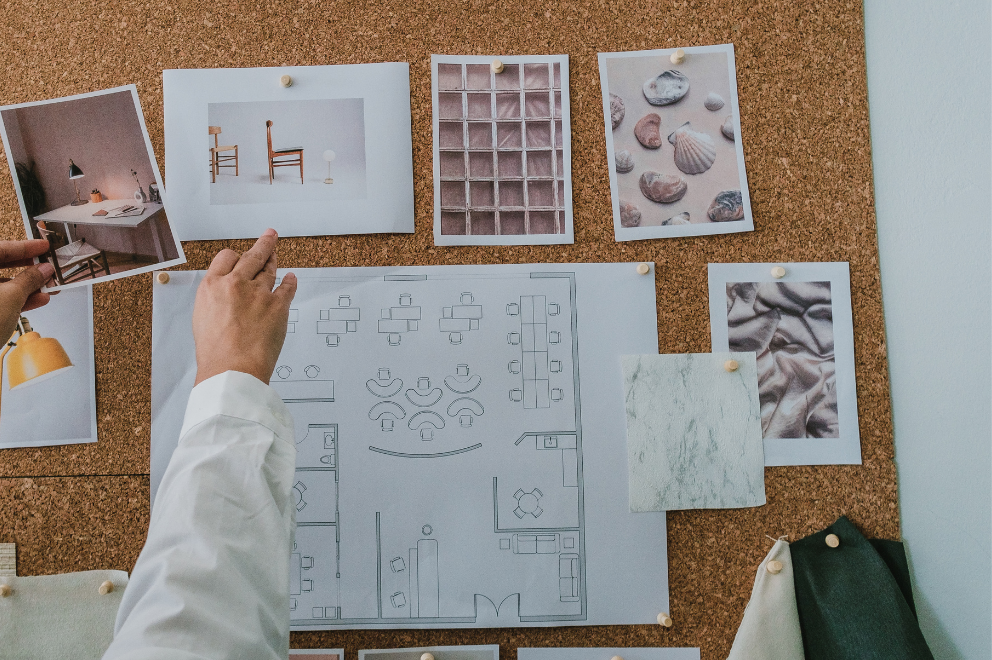
It’s easy to feel overwhelmed when you have lots of design ideas swirling around. A vision board helps clear things up by putting all your ideas in one place. Seeing them together makes it easier to decide what works and what doesn’t.
A vision board isn’t just about being practical—it’s a chance to get creative. As you collect images, colors, and textures, you might stumble upon new ideas or combinations you hadn’t thought of before. It’s a fun way to think outside the box and explore new styles.
Once you have your vision board, it’s like a roadmap for your project. Instead of feeling lost or uncertain, you can look at the board and know exactly what direction to take. It keeps your decisions focused and makes the whole process smoother.
Your vision board is more than just an idea—it’s something you can look at whenever you need a reminder of your goals. Whether it’s a physical board on the wall or a digital one on your phone, it helps keep your design on track, making sure everything stays true to your original vision.
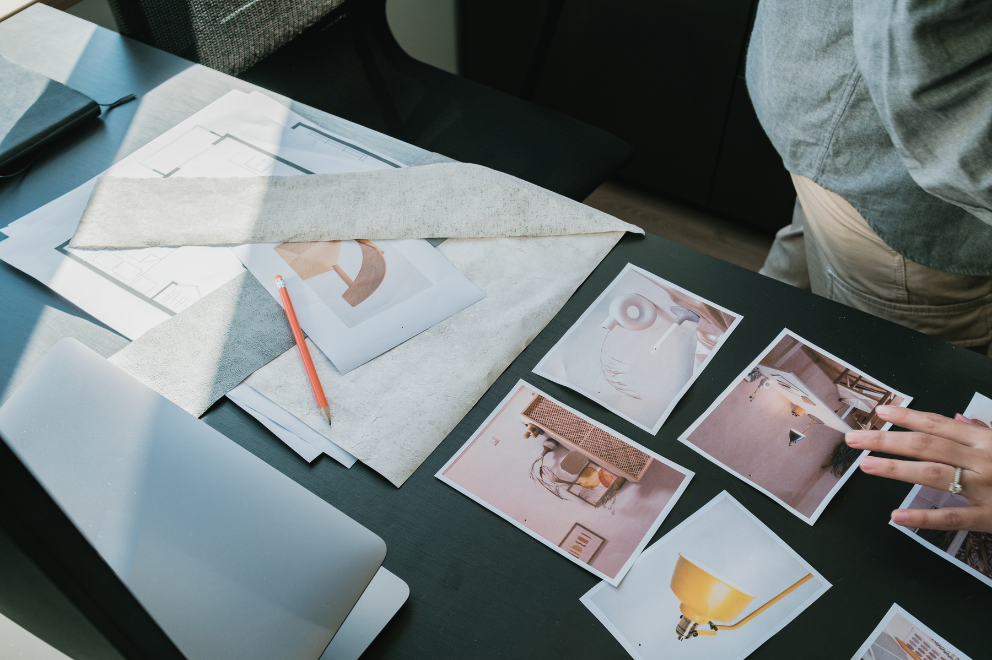
This is where the fun starts! Gathering inspiration lets your creativity flow and helps you explore a world of ideas.
Now that you’ve gathered inspiration, it’s time to decide how to present your ideas.
Digital Board: For flexibility, go digital! Tools like Canva or Pinterest let you easily edit, share, and access your vision board on the go.
Physical Board: If you like a hands-on approach, try using a corkboard or scrapbook. Pin and rearrange images, swatches, or notes as your vision evolves.
Now, bring order to the inspiration you’ve collected.
Now it’s time to bring it all together.
Before calling it done, take a step back and review your work.
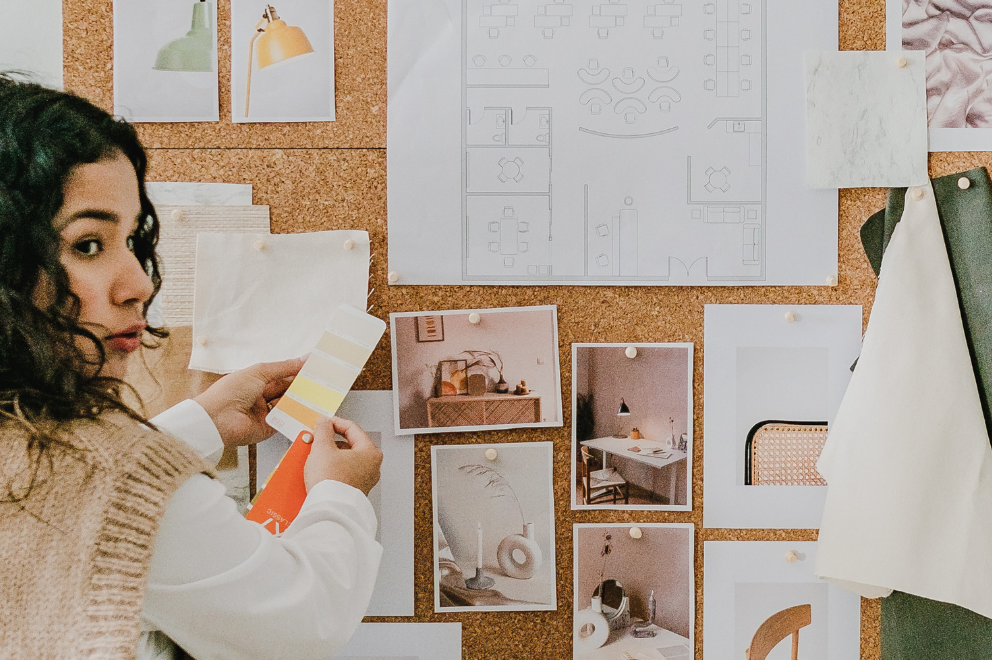
Create a beautiful vision board that covers all aspects of your life—whether it’s health, career, or relationships. Simply add images, quotes, affirmations, and other inspiring elements to design a board that will keep you motivated and focused on your goals.
There’s no limit to what you can include on your vision board. The key is to choose things that truly reflect your goals, dreams, and values. Here are a few ideas to help get you started:
Each item should represent something meaningful to you, keeping your vision clear and your motivation strong.
A vision board helps you see your goals and dreams clearly. By placing important pictures, words, and ideas in one place, you can focus on what truly matters and stay motivated to work toward it. To create a meaningful vision board, start by identifying your top priorities and then build your design around them. This way, you can keep your goals front and center as a constant reminder of what you want to achieve.
A home decor vision board helps you organize your ideas and stay focused on your style. By gathering all your inspiration in one place, it’s easier to see what works together and avoid feeling overwhelmed by new trends. It keeps you consistent and serves as a helpful guide when making decisions, so every choice—whether it’s furniture or colors—matches your overall vision.
There are plenty of simple tools to help you create a digital vision board. Pinterest is great for collecting inspiration, Canva offers customizable layouts, and apps like Milanote and Morpholio Board are perfect for creating mood boards with drag-and-drop features. These tools make it easy to organize, arrange, and share your design ideas.
Definitely! A home decor vision board is a great way to share your style and ideas with a designer. It gives them a clear visual of what you’re aiming for, making it easier for them to understand your preferences. This reduces the chance of any miscommunication and helps ensure that you and the designer are on the same page about the final look.
Creating a home decor vision board is a fun and helpful way to see your design ideas come to life. Whether you’re updating one room or redoing your whole house, a vision board helps you organize your thoughts and stay focused. It makes the process easier and ensures your space reflects your personal style. So, gather your favorite ideas, let your creativity flow, and start designing the home you’ve always dreamed of!

James Sullivan, an architect with a degree from the University of Texas, has focused on sustainable beach house designs since 2013. He joined our team in 2020, weaving his expertise into articles that emphasize harmony with nature. James enjoys scuba diving during his weekends.

Hi there! I’m Aisha Harper. With a background in exploring breathtaking destinations and a deep appreciation for creating warm, inviting spaces, I’ve combined my passion for adventure and home into a fulfilling career. From scaling mountains to styling living rooms, I love blending the thrill of the outdoors with the comfort of home, inspiring others to do the same.